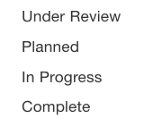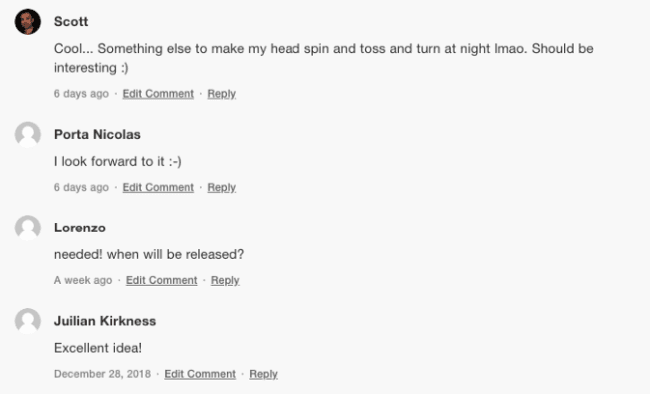Jan 9, 2019 | 4 minutes
Incorporating Customer Feedback into Your Product Roadmap: A Short Guide
If your team is overwhelmed with support tickets, feature requests, product prioritization, and customer complaints, go ahead and give Canny a try.

Customer feedback is key when building a product roadmap.
But with a plethora of channels available for your users to share what’s on their minds, comes the harrowing task of hunting and gathering feedback from social, email, chat and that pesky form on your website that is integrated with yet another channel.
Even if you manage to take care of the first step, you need to track ongoing conversations on social media, prioritize feature requests and updates, and very importantly, keep everyone posted about the progress.
Phew!
That’s a lot of stuff to take care of while you’re already probably struggling to keep up with your to-do list (if you have one of course; here’s an argument for not using one at all).
While I would love to talk more about making to-do lists work for you, I will keep the discussion focused on managing feedback and minimizing the effort that goes into building a product roadmap that your customers appreciate and your team loves.
Enter Canny!
I’d like to let you know that Make recently moved to Canny to manage feedback and feature requests so what you read hereon is based on first-hand experience.
For those who haven’t heard of Canny, it’s a ridiculously simple yet powerful tool to collect feedback and feature requests, get others to vote on them to group similar requests and keep everyone engaged by letting them know when the status of a request is changed.
In essence, you can either build a product roadmap by scrambling through feedback and guessing the most useful features, or you can empower your customers to collaborate and prioritize the most-needed features as well as make informed decisions based on the persona of the customers requesting a particular update.
We took the second approach and besides the obvious benefit of saving a lot of time, here are some of the biggest benefits we have seen so far:
1. No more decision fatigue
A product-centric company like ours can hardly prevent our team from obsessing over improvements, let alone thinking about the myriad possibilities presented by each new feature request.
Therefore, even though we had a solid way to track the number of times a particular app, update or feature was requested via our official support channel, we were constantly struggling to include feedback and requests received on our thriving Facebook community as well as social media channels.
As a result, we didn’t have accurate data on the most sought after features and identifying users from our social channels was mostly guesswork. The natural outcome was decision fatigue when prioritizing features and updates.
But since we implemented Canny and made it the only place to accept requests, deciding what to build next doesn’t leave the team guessing and debating, it just needs a few clicks to see the most-voted features.
2. Streamlined communication and happier users
For any growing company, there ought to be dissatisfied users whose requests are not prioritized.
While it’s important to accept that we cannot make everyone happy, we knew that we had to find a scalable way for each of them to voice their opinion and share feedback in an open, collaborative environment.
While we made sure that we were always listening, it was hard for us to track all the requests submitted by a user and impossible to keep one posted whenever one’s request was being planned or was in progress.
And though we did let one know once a request had been implemented, it was a manual task fraught with potential lags — something one doesn’t expect from a company whose very premise is automation of manual tasks.
With Canny, we let users create requests with ease in a standardized format, upvote existing ones, and also let them know when a request has been acted upon. As you may agree, acknowledgment is key to customer happiness.
3. Validation of planned features
While it’s quintessential to let customers contribute to your product roadmap, it’s equally important to validate the features planned by your own team.
And the best way to do this is to gather quick feedback from real customers before dedicating resources to conduct one-on-one interviews.
Canny has enabled us to do that quite efficiently and in some cases, has helped us identify clear winners, eliminating the need for validation via customer interviews.
Collaboration makes everything better and letting our users do so has helped us in ways more than one.
We no longer have requests scattered or lying in unattended silos. Our customers have a place to share feedback which is separate from our official support channel, which has resulted in reduced redundancy and increased efficiency.
If your team is overwhelmed with support tickets, feature requests, product prioritization, and customer complaints, go ahead and give Canny a try.
And to automatically import requests and feedback from other channels into Canny or to integrate it with the tools you already use, check out the triggers, actions, and searches supported by Make or take a look at Canny’s native integrations.





